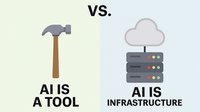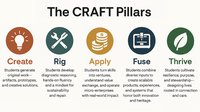“The liberation of human attention may be the defining moral and political struggle of our time.”
— James Williams, Stand Out of Our Light
We live in the Age of Distraction, a time when attention is no longer a given. Distraction has become the norm. Educators report rising disengagement, constant digital interference, and growing cognitive fatigue, all of which make deep learning feel increasingly out of reach. Yet within this challenge lies an opportunity: to rethink how we design learning environments in ways that support students in protecting, directing, and expanding their attention.
At Elite Academic Academy, this vision has guided our integration of immersive technologies such as virtual reality (VR) and artificial intelligence (AI). These tools are not add-ons or gimmicks. They are part of a broader commitment to designing for presence, relevance, and human connection. By aligning technology use with a strong pedagogical foundation, we aim to create the conditions where students can meaningfully engage, reflect, and grow.
Why Attention Must Be a Design Priority
In Stand Out of Our Light, James Williams examines how persuasive technologies interfere with human focus and freedom. He argues that distraction is not merely a nuisance or personal flaw, but a consequence of intentional design. Schools, he believes, are among the few institutions with both the power and the duty to push back against this trend.
This insight reinforces what many educators know intuitively: sustained attention is essential to learning, identity, and agency. But cultivating it requires more than discipline or routine. It requires spaces that invite curiosity, reduce cognitive clutter, and help learners regain control of their focus.
From Overload to Presence: Immersive Learning in Action
Immersive experiences offer a compelling path forward. In our VR simulations, students might walk on the moon, present arguments in a courtroom, or step into a historical moment. These environments are designed to remove outside distractions and place students in purpose-built contexts where learning becomes experiential and personal.
This approach shifts the conversation from engagement as a metric to presence as a goal. In a world dominated by passive consumption and multitasking, VR allows students to pause, reflect, and connect with ideas and people in deeper ways.
AI With Empathy: Rethinking Personalization
AI’s role in education continues to expand. While task automation remains a common application, our focus is on how AI can foster emotional intelligence and strengthen learner agency. Through collaborative design, we are developing tools that do more than deliver answers. These systems are built to interpret tone, encourage growth, and adapt to students' needs in real time.
In our emerging public speaking modules, for example, students rehearse on a VR stage in front of AI-powered audiences that provide feedback on both content and delivery. The technology evaluates not only what students say, but also how they say it. It considers tone, pacing, and confidence to help learners improve. In other areas, emotionally responsive AI agents are being designed to support the development of critical
social-emotional skills such as collaboration, resilience, and reflective thinking.
These tools are part of a broader shift in how we design for presence, growth, and emotional awareness. Through our EliteX Fellowship, we are also empowering educators to lead this work. The fellowship is a yearlong initiative focused on immersive instructional design, ethical AI integration, and future-ready learning environments.
Fellows engage in hands-on learning, design prototypes, and collaborate across disciplines to build experiences that are innovative, inclusive, and grounded in human connection.
From Engagement to Integrity
Too often, edtech products pursue engagement without asking whether that engagement has lasting value. As James Williams points out, engagement should not be the goal. It is a data point, not a destination. The more important question is whether learning experiences help students become more self-aware, more independent, and more connected to their own goals.
This question shapes our design choices. We work to create systems that honor student agency, align with intrinsic motivation, and build the skills students need to thrive. These are not just academic outcomes. They are life skills with lasting impact.
Looking Ahead
As we continue to refine and expand our use of VR and AI, one question remains at the center of our work: Does this help students stay connected to what matters most? If the answer is no, we return to the drawing board.
This mindset requires more than the right tools. It demands a culture of experimentation, reflection, and shared leadership. That is why our EliteX Fellowship is not just a professional development initiative. It is a strategy for long-term capacity building. By equipping educators to design and lead immersive learning experiences, we are creating the conditions for innovation to grow from within.
Keeping the light on requires us to cultivate attention, agency, and empathy. These are not optional features of learning. They are the foundation of deep thinking and authentic connection. In a time shaped by constant digital noise, they may also be our most urgent priorities.
To those leading innovation in schools: the challenge of distraction is real, but it is not insurmountable. With thoughtful design, courageous collaboration, and a commitment to human-centered learning, we can build a future where students are not just engaged, but truly empowered.
About the Author
Laura Spencer is the Chief Academic Officer at Elite Academic Academy.











